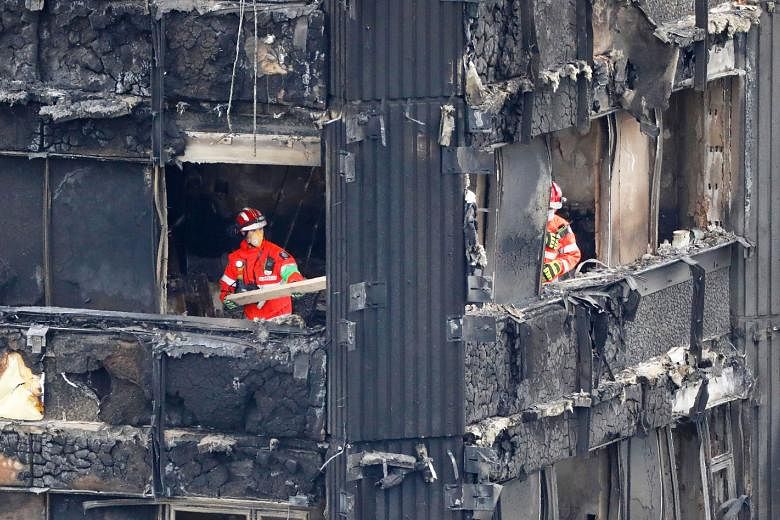In the light of a deadly tower block fire in west London last month, the authorities here are reviewing legislative amendments to require some old buildings in Singapore to perform fire-safety upgrades.
This applies to buildings that were constructed before 1974 and have not had any upgrading works.
The amendments would require these buildings to meet current fire-safety rules, said Home Affairs and Law Minister K. Shanmugam in a written reply on Monday.
He was responding to parliamentary questions from Ms Sylvia Lim (Aljunied GRC), who asked what lessons could be learnt from the London tragedy.
She also asked about measures put in place to reduce the risk of a rapid and lethal fire in high-rise buildings here - particularly those built in the 1970s and 1980s.
Last Friday, it was announced that 149 high-rise buildings in Britain failed fire-safety tests that were carried out after the June 14 fire in Grenfell Tower.
The failed fire-safety tests related to the use of cladding - typically applied on external walls of buildings for weather protection or aesthetics. The speed at which the fire engulfed the 24-storey tower has raised questions about the safety of cladding used in the building.
Addressing MPs' concerns on fire safety and the Grenfell case, Mr Shanmugam said that with the Fire Code introduced in 1974, all buildings here have been required to use cladding of only Class 0 standard. This means that when ignited, the fire will not spread along the surface.
He added that old buildings built with non-compliant cladding, including Housing Board residential blocks built in the 1970s, would also have had to comply with the Fire Code once they carried out alteration and addition works.
"For old buildings that were constructed before 1974 and have not undergone any upgrading works over the years... the Ministry of Home Affairs and Singapore Civil Defence Force (SCDF) are reviewing legislative amendments to require some of (them) to perform fire-safety upgrades," he said.
Elaborating on current rules, Mr Shanmugam said all high-rise buildings in Singapore - above 24m in height and about eight to 10 storeys high - are required to have added fire-safety provisions such as fire lifts. This is in addition to provisions such as fire hose reels, exit staircases and emergency lighting.
Super high-rise residential buildings that exceed 40 storeys require at least one refuge floor for every 20 storeys, Mr Shanmugam added.
These refuge floors have to be fire resistant for at least two hours, serving as a temporary holding space for evacuees while firefighters put out the blaze, he said.
SCDF prioritises the evacuation of occupants on floors affected by the fire, as well as those on the two floors above, said Mr Shanmugam.
Residents in unaffected floors will be advised to stay in their respective units. Such an approach will minimise injury or mishaps resulting from the evacuation process.


